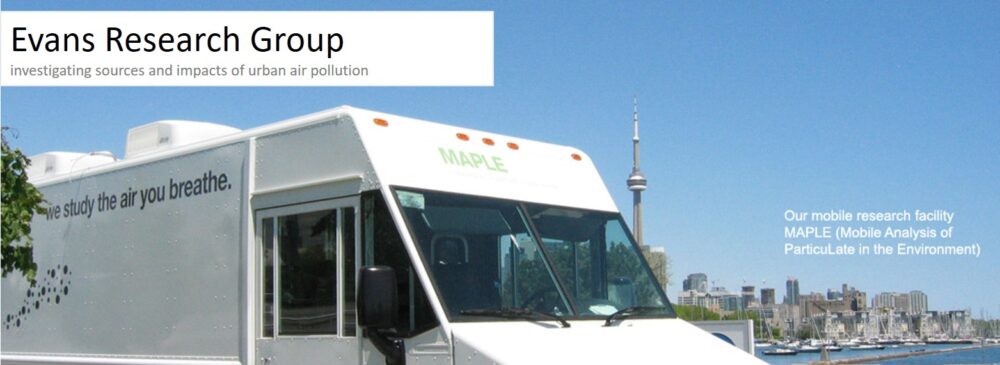Scientific research is not conducted in isolation; instead, it brings together researchers in different fields as well as policymakers. Dr. Elisabeth Gilmore, Assistant Professor at the University of Maryland’s School of Public Policy, spoke about how air quality research is used in policy making to estimate the social costs of fine particulate matter (PM2.5).

Source: Health Canada
Policy making involves using cost to evaluate whether alternative products, processes, or policies should be implemented. In most cases the market price accounts for all of the resources involved. But social costs occur when the market price does not account for the full associated cost, representing a market failure. The government then needs to step in and apply regulations, such as air quality policies.
The social cost of air quality is calculated as dollar per ton of emission, and often determined using an impact pathway approach. A full impact assessment consists of a series of studies ultimately linking emissions to the cost of human health effects (premature mortality). It is labour and time intensive to produce according to Gilmore.
Alternatively reduced form estimates, focusing on one dimension of air quality, can be used instead of specific estimates determined from the full impact method to calculate the social costs. In this talk, Gilmore discussed how the numbers used in reduced form estimates are developed and evaluated how uncertainties in air quality chemistry and models influence these values.
Gilmore and her colleagues developed new social cost estimates using a chemical transport model that captures ambient concentration and exposure patterns. The model is based on emissions collected from American cities, two rural sites and two urban sites, for elemental carbon, nitrogen oxides, sulphur dioxide, and volatile organic compounds (VOC) found in PM2.5.
Gilmore said the social costs calculated from their new model differ from literature values by a factor of two to more than ten for reactive and non-reactive compounds. Chemical variability is one reason for the difference. Gilmore said organic carbon is often treated as inert or non-volatile, but new evidence suggest that is not entirely valid. Also, she said there are still gaps in understanding of how VOC transform into secondary organic aerosols. Gilmore recommends caution when using literature values to calculate the social cost of air quality and should investigate a range of social costs rather than focus on an absolute value.
Gilmore presented preliminary results of the group’s new social cost estimates for air quality and is in the process of finalizing these values for comparison between previous publications and their current model. She also pointed out that the numbers used in the estimates are not stable; for instance, climate change will also have a significant influence on the numbers. This leads to the question of what numbers should be used when developing projections to evaluate the social costs for 20 or 40 years from now?
